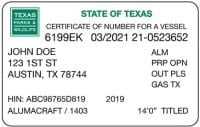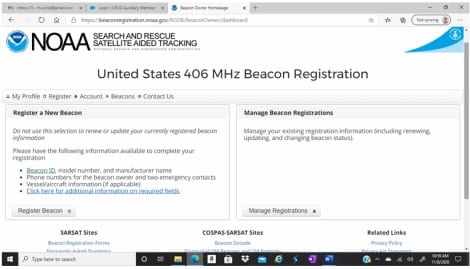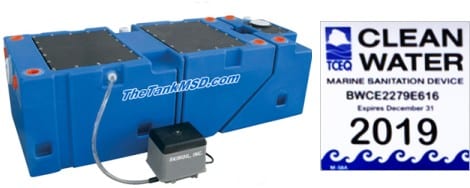 By Bob Currie, Recreational Boating Safety Specialist
By Bob Currie, Recreational Boating Safety Specialist
U. S. Coast Guard Auxiliary Base Galveston Flotilla
Back in the fifties when I was growing up, the average male got his hair cut by a barber about once a month. Sometimes a man would just go in for a little trim. He would tell the barber “Just a little off the sides.” That meant that the haircut in general was just needing a trim. Barbers called that a maintenance cut. Well, this column is about performing a little routine maintenance on your boat to keep it looking fresh, operational, and everything up to date; just a little off the sides. This column isn’t designed to list all routine maintenance- it’s just a list of things that you need to keep up to date or take care of periodically.
The Base Galveston Flotilla of the US Coast Guard Auxiliary operates out of the US Coast Guard base on Galveston Island. They aid the Coast Guard by providing maritime observation patrols in Galveston Bay; by providing recreational boating vessel safety checks; and by working alongside Coast Guard members in maritime accident investigation, small boat training, providing a safety zone, Aids to Navigation verification, in the galley, and on the Coast Guard Drone Team.
Rolling, Rolling, Rolling
Although quite a few people either leave their boat in the water most of the time or store their boat on a lift, a good many people trailer their boats to and from the water. This would be a good time to check your wheel bearings and service them if needed (see manufacturer’s instructions). If you have exposed wheel lugs (not the cap lug nut style), check your wheel lugs for rust. If they are rusty, clean them with a wire brush. To save you from having to do this routinely, coat the wheel lugs with Corrosion X or another type of anti-corrosion spray. Even clear coat paint will work.
Fire in the Hole!
We used to have to yell that out when we lit our oxy-acetylene torches in the hold of a ship we were working on. You might want to warn your passengers the same way if you have to light a distress signal flare or fire off a distress rocket. Hopefully it never happens that you will find the need to use pyrotechnic distress signals, but if you ever do you should ensure that the pyrotechnic device you are using is not expired. They are only good for 42 months after date of manufacture. Expired pyrotechnic distress signals is the number one cause for failing a Coast Guard Vessel Safety Check. What?! I just bought these last year, er, uh oh yeah- 2015. So, after reading this, go check your boat to see that your flares and rockets aren’t expired. It happens to the best of us.
While you are checking your pyrotechnics, have a look at your fire extinguishers. They need to be Coast Guard approved, serviceable (the handle hasn’t rusted off or deteriorated due to UV light if plastic), in the green on the gauge, and not expired. Some fire extinguishers have their expiration date plainly printed on the label, but some don’t. If you can’t find the expiration date on the label, turn the fire extinguisher over, and you are likely to see a year date stamped on the bottom. That is the date of manufacture. The fire extinguisher is good for 12 years past that date.
Stainless is Painless
Because we operate in salt water, many of us have as much stainless steel hardware (nuts, bolts, cleats, steering wheel) as possible to cut down on salt air and water rusting. But there are different grades of stainless steel, and even the best grade will show signs of salt air or water rust over time. Use a stainless steel cleaner and protectant whenever you see signs of rust on your stainless steel hardware. It will save you some real trouble if you “nip it in the bud,” as Barney Fife used to say.
You are Never Too Old to Get Carded
You might be old enough to get by without showing your drivers license to purchase alcoholic beverages, but on the water you are never too old to be asked for your boat registration card. I was doing a Vessel Safety Check on a large yacht recently, and the owner was quite proud of all his safety equipment and how shipshape his boat was; that is, until I asked to see his Texas Boat Registration card, also known as the Certificate of Number For A Vessel.  You must be able to present that card to the game warden, Coast Guard, or other law enforcement agency when asked. It has to be the original card- not a picture or scan of the card. But look on the side of my boat- I have the registration sticker displayed in the right place- isn’t that good enough? One word: No. I recommend keeping the card in a safe place that you can remember. My poor yachtsman couldn’t find his card. I have had people tell me they left their card in their other wallet. Not that I didn’t believe them, but I had to see the card for him to pass the inspection. If pulled over by the game warden or Coast Guard, if you can’t produce the card the fine is $150. If you really need two wallets, consider carrying both (one in the left back pocket and one in the right). Not only will you have everything you need, you will be balanced and not subject to back problems due to sitting at a slant.
You must be able to present that card to the game warden, Coast Guard, or other law enforcement agency when asked. It has to be the original card- not a picture or scan of the card. But look on the side of my boat- I have the registration sticker displayed in the right place- isn’t that good enough? One word: No. I recommend keeping the card in a safe place that you can remember. My poor yachtsman couldn’t find his card. I have had people tell me they left their card in their other wallet. Not that I didn’t believe them, but I had to see the card for him to pass the inspection. If pulled over by the game warden or Coast Guard, if you can’t produce the card the fine is $150. If you really need two wallets, consider carrying both (one in the left back pocket and one in the right). Not only will you have everything you need, you will be balanced and not subject to back problems due to sitting at a slant.
Are You Registered to Vote?
Good. We have been getting lots of reminders to register to vote (and to actually vote, too), but this may be the only reminder you get to register (or re-register) your Emergency Position Indicating Radio Beacon (EPIRB) or your Personal Locator Beacon (PLB). It’s great that you spent the extra money to buy an EPIRB and/or a PLB for when you go far offshore and thus out of range of the Coast Guard’s Rescue 21 system, which utilizes marine FM/VHF radio to track you in an emergency, but like your marine radio EPIRBs and PLBs require registry with the NOAA Search and Rescue Satellite Aided Tracking (SARSAT) system.
You can register or re-register your tracking mechanism at https://beaconregistration.noaa.gov/RGDB/index. You must re-register your EPIRB or PLB every two years. Be sure to put a sticker with the expiration date on your EPIRB or PLB as a reminder.

Register That Toilet, Too!
Any installed toilet must be a Coast Guard approved device. Overboard discharge outlets must be capable of being sealed. Boats operating in Texas must obtain a TCEQ certificate of compliance that must be displayed next to the Texas boat registration sticker. This item does not apply to portable toilets with no discharge outlets to the sea. The TCEQ registration is also good for two years. Be sure to stay current with that registration, as the fine for not being current is $500.

Testing, Testing, 1, 2, 3…EPIRB and PLB
Your 406 MHz EPIRB should be physically examined and the self-test function checked monthly. Annually you should ensure the installation is such that the EPIRB will be caught up in any rigging or structure should your boat capsize. The unit must be capable of automatic release when submerged and automatic activation when placed in water. Additionally, the unit must be capable of manual release and activation. The battery date must not be expired, and the EPIRB must be registered with NOAA. Once registered, the EPIRB or PLB must be re-registered every two years. I have said it twice now. Also, be sure to update your registration if anything changes.
Testing, Testing, 1, 2, 3… Marine FM/VHF Radios
For several years Sea Tow operated an Automated Radio Check System. That service ended on October 2, 2020. The U.S. Coast Guard continues to offer an automated Digital Selective Calling (DSC) Test Call capability from each of its Rescue 21 coastal stations. All fixed mount marine radios certified by the Federal Communications Commission since 1999 are required to have a DSC capability. All such radios sold since 2011 must also have a DSC test call capability. Marine radios transmitting and successfully receiving a response from a DSC test call can be expected to operate acceptably in the voice mode as well.
To perform a DSC Test Call, enter the U.S. Coast Guard’s coast station group identity “003669999” into the radio’s DSC memory. Once entered and stored, a DSC test call can be made by executing the following three steps:
(1) Select “Test Call” from the radio’s DSC menu,
(2) Select the USCG number entered into memory, and
(3) Transmit the call.
The radio display should indicate when that test call is acknowledged and display the acknowledging station’s nine-digit identity. That identity may be different than the group identity previously entered into memory.
For non-DSC capable radios, use Channel 09 to make a voice request for a radio check. Do not use Channel 16. Channel 16 is for emergency transmissions- not radio checks.
Summary
This column is about sweating the details. The little things you must do to remain current can easily escape your attention. Although there may be other things that require your attention, this list should get you started on necessary small item maintenance.
For more information on boating safety, please visit the Official Website of the U.S. Coast Guard’s Boating Safety Division at www.uscgboating.org. Questions about the US Coast Guard Auxiliary or our free Vessel Safety Check program may be directed to me at [email protected]. SAFE BOATING!
[Nov-9-2020]

 Posted in
Posted in 























